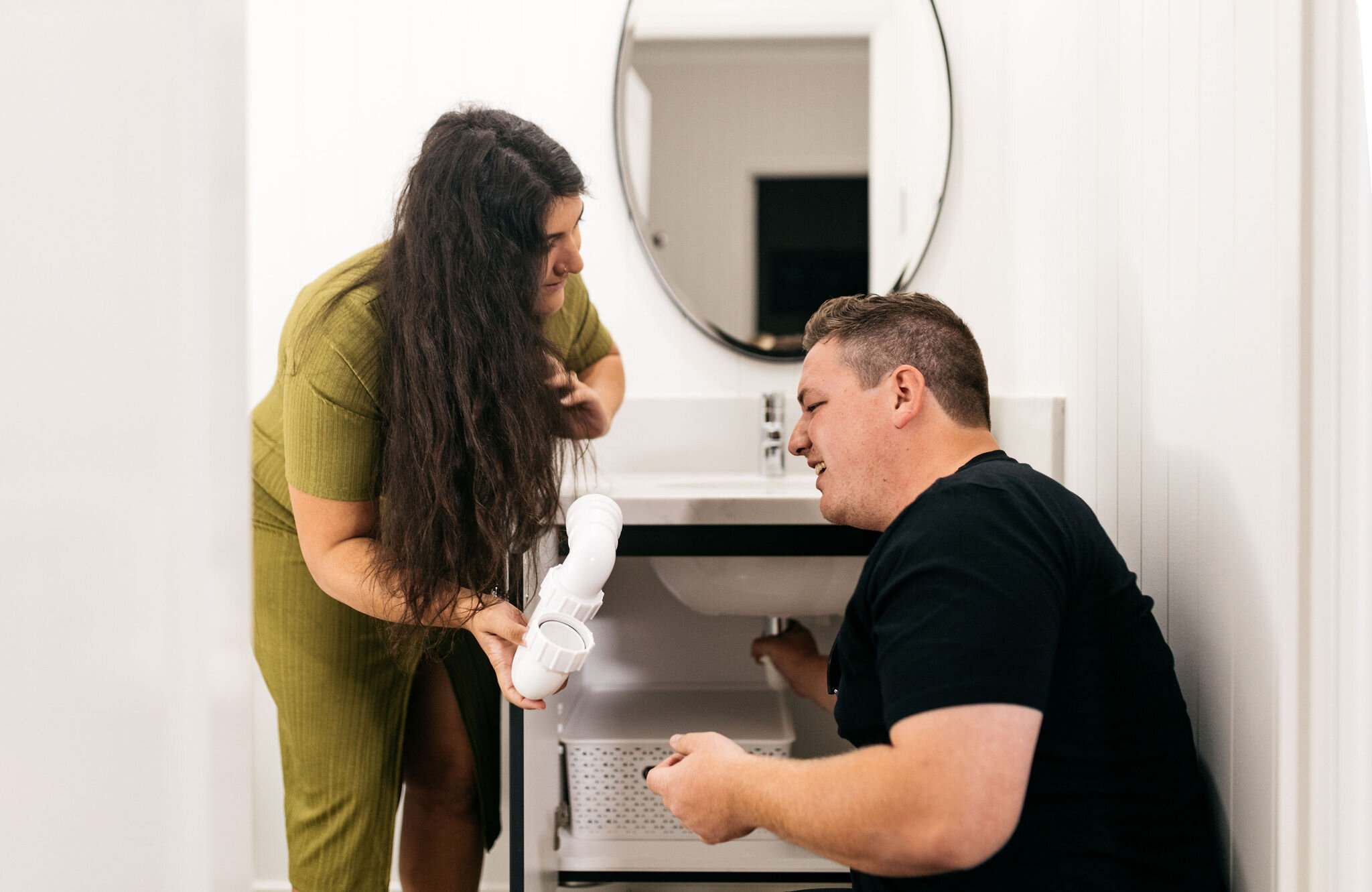DIY PLUMBING: 5 common plumbing problems and how to fix them yourself!
Got a small plumbing problem around the house that you’re not sure what to do about? A dripping tap driving you mad or your bathroom sink is maybe draining a little slower than it should be? Maybe it seems a little too simple to call in a qualified plumber but you’re not quite sure how to fix the problem yourself? We’ve got you covered. We’ve put together the 5 most common household plumbing problems and how you can fix the problem yourself saving you some hard-earned cash.
1. Leaky tap
Dripping taps are so common it's rare to find someone who hasn't experienced this issue. It's annoying to listen to late at night when you’re trying to sleep, and the waste of water can unexpectedly increase your water bill and cost you money. In fact, a single tap can drip away hundreds of litres over the course of a year if left untreated.
The cause in most cases is an internal washer that has become stiff, torn, worn, or dislodged over time. Fixing the problem is often achievable by the average homeowner but requires the correct tools and parts to fix the job. You can usually pick these up at your local hardware store. You’ll need to turn off the water supply to your taps before you tackle the job. We’d recommend after dismantling your taps - you’ll typically need a wrench and a screwdriver for this part - taking the broken parts with you so you know exactly what new parts to buy. Once you’ve got your replacement parts you should be all good to put the taps back together again and they should hopefully be drip-free!
Handy tip: You should be able to find a video on youtube for your specific set up breaking this process down.
2. Slow draining sink
This problem is normally caused by a blockage that is limiting water flow. Your kitchen sink drain may contain things like food remnants, in a bathroom sink the blockage is more likely knotted hair and soap buildup.
Methods for clearing a clogged sink can involve using a plunger, a chemical drain cleaner, pouring down baking soda and vinegar if you’re looking for a more natural solution or using a plumber's snake. If the problem isn't tackled when it's small, it will likely worsen over time, until eventually the drain is completely blocked.
Oftentimes, a plunger will do the job to dislodge what’s trapped in your pipes and get things flowing again. However, for instances where hair has tangled and built up, you may need to resort to a chemical drain cleaner.
How to unclog a sink drain using a chemical drain cleaner:
Follow all the directions on the packaging and make sure not to use too much
Wear gloves and goggles for safety
Don't get experimental and mix chemicals. This can produce poisonous gas.
Pour the drain cleaner down the drain.
Note: Chemicals can cause damage to your pipes if used repeatedly, so we recommend not resorting to this method lightly.
3. Clogged Toilet
When your toilet bowl fills up and doesn't drain away, it’s clogged. The blockage is normally caused by a mixture of paper and… the obvious. Typically, you can unclog a toilet yourself with a plunger. If that doesn't work, then a sewer snake or drain auger can be used to loosen up the blockage and get things flowing as they should be.
If the kids have played a practical joke on you and there’s something properly stuck down your toilet, you’re most likely going to have to call in a licensed plumber to sort the situation out for you. At Al’s plumbing and Gas, we’ve seen and fixed it all and are more than happy to help.
4. Low water pressure
Nothing ruins your shower more after a long day at work than crappy water pressure. Low water pressure can be caused by leaking pipes that have become broken, worn, or corroded over time, which is a job for a licensed plumber. However, more often than not, it's caused by a build-up of sediment and mineral deposits in your aerator. You can soak the aerator in vinegar to clean it. If it's the shower that's the problem, then you need to either soak the showerhead in vinegar or simply replace it.
How to clean a shower head with vinega
Dismantle and clean off any dirt or soap.
Use a toothbrush soaked in vinegar to scrub and loosen any mineral deposits.
Use a safety pin or toothpick to poke off any loose deposits.
Soak the parts in vinegar overnight to dissolve any leftover deposits.
Assemble your showerhead the same way it came apart - your water pressure should be significantly better.
5. No Hot Water
While on a hot QLD summer’s day this may not be an issue, no hot water may be worse than dealing with low water pressure. This problem may not be discovered until you are in the shower and the water suddenly goes cold. There are multiple issues that can cause your hot water system to fail. The pilot light may go out, and you have to relight it. A build-up of sediment in the tank can also cause problems. Another time, it may be the thermostat that is at fault.
Usually, you will want a professional plumber to inspect, maintain, and fix your hot water system unless it's something basic like the pilot light needing to be relit which you can do yourself.
Job seem a little too complex than first thought? Give Al’s Plumbing and Gas a call on 0420 923 660 to get talking to a friendly, fully licensed plumber today and we’ll happily help you out with a diagnostic phone call.

